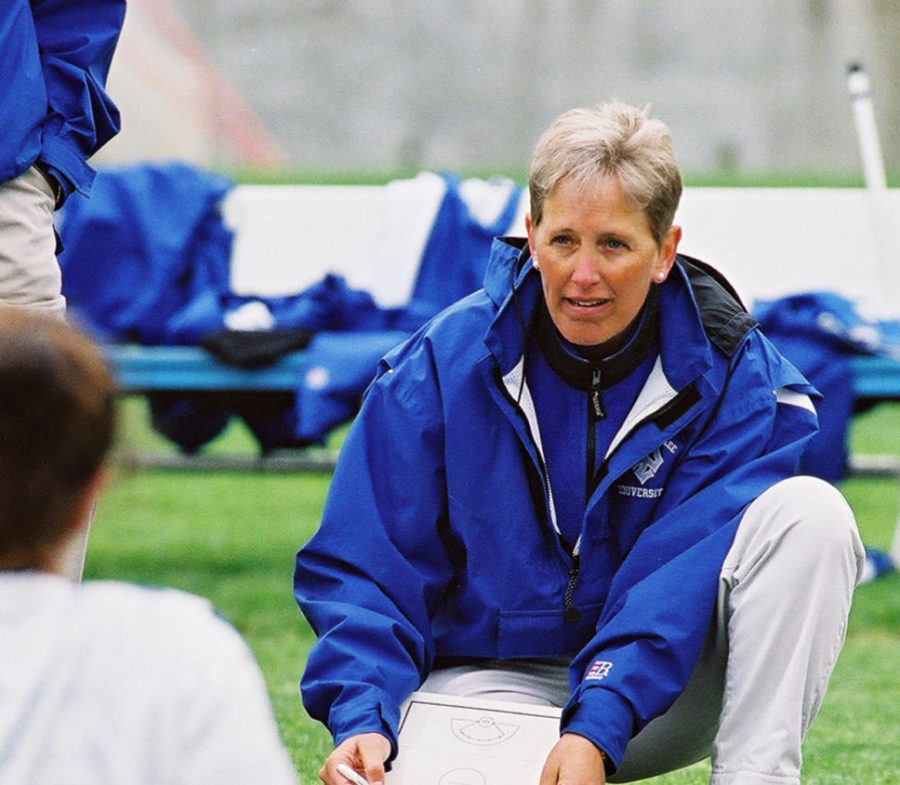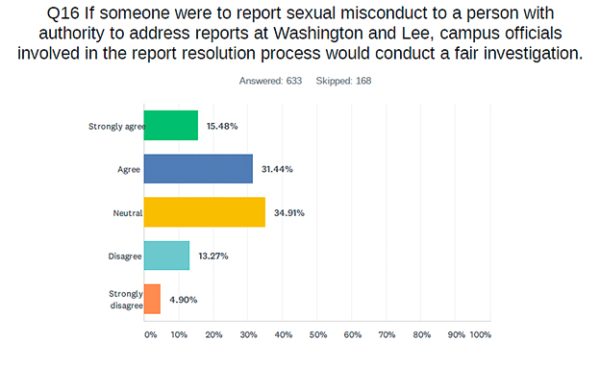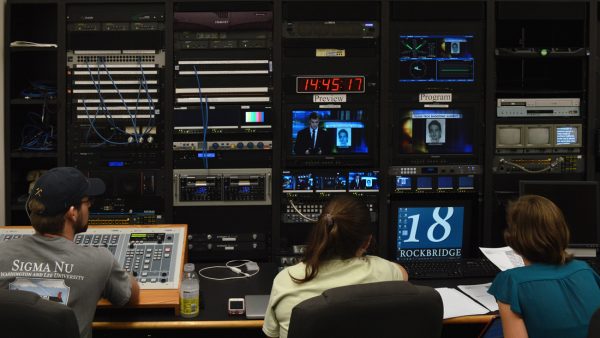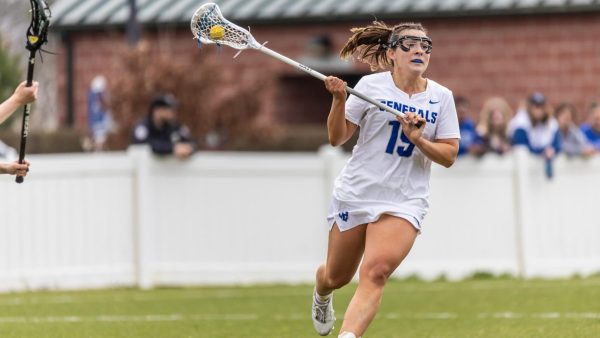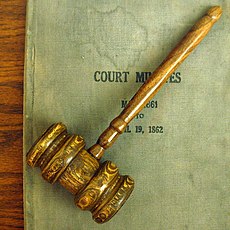Gender gap plateau in athletics highlights progress to be made
W&L is working to close an ongoing gender gap and to create an inclusive environment for all athletes
Athletics Director Jan Hathorn was inducted to the Intercollegiate Women’s Lacrosse Coaches Association Hall of Fame last November for her contributions to the sport as a player and coach. Photo courtesy of Generals Sports
April 11, 2023
The 2022-23 athletic season marks the 50th anniversary of Title IX’s passage. The legislation made drastic changes in the world of women’s sports, providing female athletes with equal opportunity. Washington and Lee University prides itself in its efforts to increase women participation and representation in its athletic programs. Of the school’s 24 varsity sports, there is currently an equal split of 12 men’s and 12 women’s teams. However, like many colleges and universities across the country, there is a noticeable gender gap between male and female athletes in collegiate athletics.
Breaking it down by sport, the gender gap becomes even more apparent. The two sports with the largest rosters at Washington and Lee are football and lacrosse. While football is a male-only sport with 90 players on their 2022-23 roster, lacrosse fields both a men’s and women’s team. The former currently has 56 players on its roster, with the latter only carrying 30 players.
Based on an independent data collection** analyzing roster sizes over the past 25 years, the gender gap in W&L’s athletic programs appears to have plateaued. In 1999, 66% of student-athletes were male. Today, that percentage has dropped to 58%, a notable decline, however, one that appears to have come to a halt. The first time that percentage appeared was in 2002, when the university fielded 252 male athletes and 181 female athletes. The percentage has yet to climb above 66 or fall below 57 throughout the past 25 years.
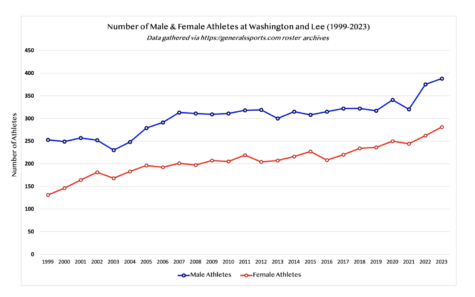
Sometimes, it’s the students outside the university’s athletic programs that are most aware of the gender gap.
“More people definitely go to the men’s games than the women’s games. In my time here, it’s never changed,” said Eliza Wilks, ’23. “Some of my closest friends are athletes here and they always mention how the men’s locker rooms are far nicer than the women’s, same with the gear they’re issued, too.”
W&L hosted only male students until 1985, when the university officially became coeducational. The first varsity female athletic team wasn’t established on campus until 1987, when current Director of Athletics Jan Hathorn led the General’s women’s soccer team.
Hathorn is one of the school’s original female staff members. She made history 14 years ago when she became the first female athletic director in the university’s history.
“There’s not a lot of female athletic directors in Division III, maybe 30%. In Division I it’s far less. And yet, there are a lot of women’s sports that are still coached by men,” Hathorn said. “Those are the kinds of things where we still have work to do, ensuring women have equal access and opportunities. But I’m proud of how far we’ve come.”
In her time at W&L, Hathorn took the initiative to grow the presence of women’s sports, adding three additional varsity programs in the last 25 years: women’s golf, field hockey and equestrian.
The department is currently working out the details of adding a softball team to further narrow the gap between men’s and women’s participation in athletics.
Despite not seeing any significant change in the male to female athlete ratio, the players and coaches at W&L take pride in the progress of the university and the awareness of the administration in recognizing that such a gap exists.
“I think you can look at the diversity in our athletic teams across both coaching staff and players and see that our racial and gender diversity exceeds other schools within the division,” said Erin Hughes, assistant coach of the Generals women’s basketball team and Class of 2021 alum. “I think that’s an impressive indication that, although that gender gap exists, we’re making a conscious effort to put both women and minorities at tables and make sure they have a voice.”
The gender gap in W&L athletics represents an ongoing challenge many colleges face today. By continuing to prioritize diversity and inclusion in its programs, W&L works to close the gender gap and create a more equitable and welcoming community for all their athletes.
**Students participating in more than one sport were counted as two separate athletes. Indoor track and field players that participate in the outdoor track and field season were counted as one. Data was gathered via the https://generalssports.com roster archives.



